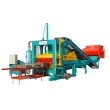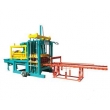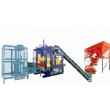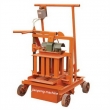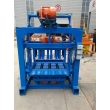Hydraulic brick machine come in many sizes. They range from simple manual machines that make 100 blocks or bricks per day to large, fully-automated machines in commercial block yards that make thousands of blocks or bricks per day. All the machines, whether small or large, work on the same basic principles.
A concrete brick or block is made of concrete that’s been molded into the correct shape, then allowed to harden and cure. Concrete brick and block making machines consist of a steel framework that holds the other components in place. There’s a chute or hopper for pouring the wet cement, a frame that holds the metal concrete-block molds, a tamper for compacting the concrete in the molds and a mechanism for transferring the molded blocks out of the machine for drying and curing.
The machine is set up with the molds appropriate to the blocks or bricks to be made. Manual machines typically mold two or four bricks or blocks at a time, while electric, pneumatic or hydraulic block machines make eight to 16 bricks or blocks at a time, depending on brick or block type. The ratio of Portland cement, sand and crushed stone in the concrete varies depending on the type of brick or block being made. In general, concrete for molding into brick or block has fine particles of sand and stone and low water content, about half the volume of water used for other types of construction concrete.
After mixing, the wet cement mix is poured into the brick or block machine, and then pressed down with a compacting tamper driven by gravity in manual machines or by a hydraulic or pneumatic ram in powered machines. More concrete is added and compacted again. Powered machines vibrate the concrete mix while it is being compacted. This process continues until the compacting head can’t press any more cement into the mold.





